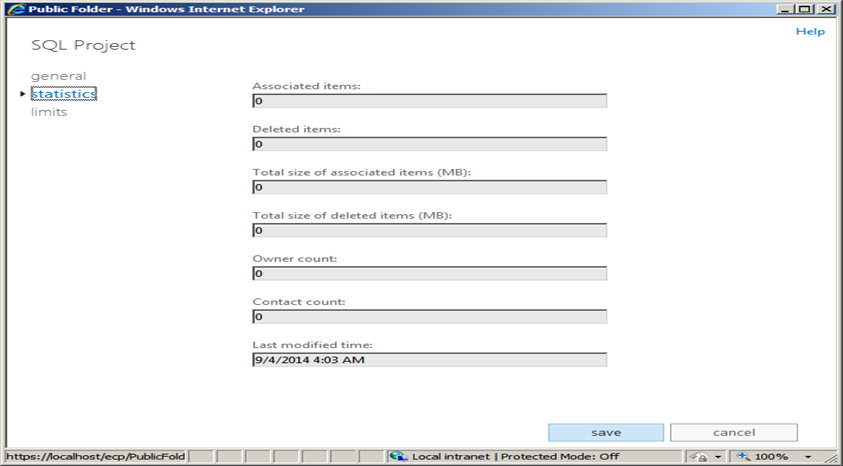
Here, \PF1 and \PF1\PF4 are going to be chosen as they are up to the limit of 20GB and were chosen with consideration of subtree structure.

\PF1\PF4 = 7 GB (PF4 is a subfolder of PF1 and the size of PF4 content is 7 GB) In another scenario, let's say we have 4 PFs in the public folder mailbox where AutoSplit process is taking place: Here, \PF1,\PF2 & \PF3 are going to be chosen as they are up to the limit of 20GB and were chosen while considering folder hierarchy. To help illustrate this, here is an example let's say we have 4 PFs in the public folder mailbox where AutoSplit process is taking place: Public folders are chosen with consideration of their subtree structure, so there is no guarantee that 20GB or 2000 folders will be moved every time. There can be multiple moves to the same target mailbox if the target mailbox’s size is still lower than 30 GB, else the system would choose a new target mailbox.

In a single move, a maximum of 20GB (in total size) or 2000 (+2000 dumpster) folders are moved (whichever is lower in size). Get-Mailbox -PublicFolder “AutoSplit_3a40f5da*” If we had to find out the AutoSplit targets of a source mailbox, we can use following command in EXO PowerShell: In this example, public folder mailbox “PFMBX” had crossed the split threshold the Exchange guid of this source mailbox is 3a40f5da-0e0a-42f3-910f-1849580ff25d, the first part of the guid is always shared with the name of the target AutoSplit mailboxes. The guid has some information regarding the source mailbox from which the split happened. The system created new public folder mailbox has the following naming convention. If the total mailbox count is > 90% of the PublicFolderMailboxCountQuota (count > 900, with current Exchange Online limits), the system randomly chooses an existing mailbox (if any exist) with until PublicFolderMailboxCountQuota ”1000” has been reached. When creating a new mailbox, Exchange online will always exclude it from serving hierarchy since a newly created public folder mailbox would not have the folder hierarchy synced yet. In the above example from tenant audit logs, the system created a new public folder mailbox “ AutoSplit_GUID” and initiated a new public folder move request for public folder data to move to the newly created target AutoSplit mailbox. Public folder mailbox’s quota for any new mailboxes has been set to the following (regardless of a mailbox plan or policy which may apply to user mailboxes):įor public folder mailboxes to undergo a split, the size should exceed the following percentage of the ProhibitSendQuota:ĭuring the split, public folders from source PF mailbox (the one that is reaching its size limit) are moved to either a new target PF mailbox (which is created automatically by the system) or an existing PF mailbox that still has space to accommodate new content. The assistant scans each public folder mailbox every hour to ensure we do not inadvertently overfill a public folder mailbox and stop it from being able to accept new content for any public folder within it. We have a time-based assistant (known as PublicFolderSplitProcessor ) actively monitoring the public folder mailbox quota usage. The goal is to ensure you do not inadvertently overfill a public folder mailbox and stop it from being able to accept new content for any public folder within it. This process actively monitors your public folder mailbox quota usage. Let’s go through each one of them, shall we? Automatic public folder moves based on public folder mailbox quota usage

When your public folder content migration to Exchange Online is complete or you create public folders for the very first time, you do not have to worry about managing many aspects of public folders.


 0 kommentar(er)
0 kommentar(er)
